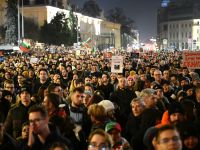- A small German city is set to become 'smart' thanks to a partnership with Huawei
- But much of Huawei's 'smart' tech has been perfected thanks to creating a surveillance state in China
- The proliferation of Chinese surveillance and city management tech is a new, global industry
- That industry may be facilitating massive rights violations
By Ty Joplin
The small industrial city of Duisburg, Germany is about to be re-structured and built anew; or at least the way it is managed and governed. Duisburg will be one of the first pilot cities to become a ‘smart city,’ where its infrastructure, management and some of its facilities will be powered not by humans, but by artificial intelligence (A.I.).
But in a bid to become more effective, Duisburg and dozens of other cities are beginning to implement and rely on technology that has been perfected thanks to widespread rights violations.
Al Bawaba has documented how Chinese tech firms are receiving contracts to work with security personnel in China in making a police and surveillance state to neutralize any disruptive people. This has included interning over a million Muslim and Christian ethnic minorities in the northwest province of Xinjiang and rolling out a ‘social scoring’ system that ranks citizens’ on their trustworthiness and penalizes those that score too low.
Now, elements of the infrastructure is going global, and some has made its way to Europe.
Duisburg, Getting the Smart City Makeover
Duisburg Mayor Sören Link(Left) and Wang Yonggang, CFO of Huawei‘s Enterprise Business Group(Right) (Huawei)
In early 2018, the Germany city of Duisburg partnered with the Chinese telecommunications giant Huawei to remake Duisburg into a ‘smart city;’ a concept championed by Huawei as the future of governance.
“Both partners agreed to make Duisburg an innovative and digitized model city in Western Europe within a few years by implementing new information and communications technologies (ICT),” a press release on the matter said.
On June 6, Duisburg and Huawei then agreed to begin implementing the “Rhine Cloud,” which provides the foundation around which future developments will be based. The Rhine Cloud is a another name for a unified ‘smart city’ and Public Services Cloud Platform, which unifies otherwise disparate forms of city maintenance and governance into a singular database.
It will first use new “technology, designed to digitize indoor environments and used for Smart City use cases like eGovernment, Tourism, Facility Management, Retail and others.”
"Huawei is focused on working with city governments to make modern cities smarter and easier to live in,” said Vincent Pang, president of Huawei West Europe Region.
“We are delighted to be Duisburg's preferred partner for developing a smart city and this cooperation will build on our success of delivering smart city deployments worldwide. Huawei integrates new ICT in unified platforms enabling IoT, communications, cloud data center and intelligent command center, to create the city's nervous system.”
But if Duisburg’s new ‘nervous system,’ is something that has evolved over time to become the marketable product it is now, it had to have been evolved somewhere.
That ‘somewhere’ appears to be in China, where Huawei has been deeply involved in creating a penetrative surveillance state under the guise of ‘smart city’ governance.
The Perfection of the ‘Smart City’
For optimizing and organizing parts of China’s surveillance state over its restive region of Xinjiang has relied on Huawei.
In early May, Huawei began work on building an “intelligent security industry” innovation lab in Urumqi, the capital of Xinjiang. The lab is meant to be an intelligence hub where data gathered from its efforts at managing the surveillance of the people on Xinjiang can be organized for its ‘smart cities.’
“Together with the Public Security Bureau, Huawei will unlock a new era of smart policing and help build a safer, smarter society,” Huawei’s press release said of the new lab.
Adrian Zenz, an expert on China’s treatment of its ethnic and religious minorities, noted in an interview that part of Huawei’s ‘smart city’ products have begun being exported to Duisburg.
Additionally, according to Huawei's website, smart city tech, such as the Rhine Cloud, has already been exported to over 120 cities.
This has human rights experts worried. “The surveillance technologies being developed and deployed in Xinjiang today will soon be sold and promoted globally,” said William Nee of Amnesty International.
“It is now absolutely vital that the international community take a stand and confront the human-rights violations occurring in Xinjiang as a matter of strategic importance.”
The most controversial element of the ‘smart city’ concept is what kind of data is considered relevant for effective governance. Banal features of city maintenance like street light triggers are included in the database that becomes part of an automated system. But it also appears that policing and security are included, giving governments a new set of state-of-the-art tools to surveill those they deem untrustworthy, suspicious, or radical.
Though domestic laws can curtail potential rights violations or privacy concerns, the ‘smart city’ tech’s testing ground of Xinjiang has little to no limits placed on it, giving companies like Huawei free reign to develop maximinaly invasive surveillance technology with no repercussions.
According to Zenz, this has given Chinese companies comparative advantages over European or American competitor companies who have to operate and test their technology in heavily constrained environments with vigilant governments and privacy watchdogs. Chinese companies simply aren’t challenged in that way.
One of the most tangible examples of a ‘smart city’ being used against people inside it is the weaponization of CCTV cameras outfitted with advanced facial recognition technology.
In Xinjiang, millions of CCTV cameras placed in strategic positions track and identify residents constantly, locating their daily routes and giving the state a constant way to monitor the movements and behaviors of those in Xinjiang. Activities captured that are suspicious, such as praying, could get flagged and warrant a visit by a Chinese intelligence agent. From there, they could be subject to lengthy detention in 're-education' camps.
That such tech is now making their way to European cities may make rights violations easier and even big data-driven.
The New Panopticon
Inside a Panopticon prison (Wikipedia)
The concept of the panopticon pre-dates the age of ‘big data’ and ‘smart cities’ by several hundred years. Nonetheless, it is an eerily relevant analogy.
A panopticon was originally sketched as a prison blueprint whereby a singular watchtower is placed in the middle of a circle of cells that all open to the tower. The prisoners can only see the tower, and the guards can see into every cell.
This gives them a kind of profound power: prisoners, assuming they are being watched at all times, will internalize their own surveillance and self-police. They begin to the guards’ jobs for them.
Legal analysts such as Simon Zhen think China’s new surveillance state that is is exporting is a contemporary panopticon.
“It’s not that the government actually has its eyes on and controls you at all times,” said Zhen in an interview.
“The point is that the government could have its eyes on you at its discretion and if you give it a reason to. For example, trying to organize a mass protest against the government would easily put you on its radar.”
Zhen then added, “another example is how there is nothing physically stopping you from posting an emotional post about the Tiananmen Square incident or Falun Gong on a popular social media website, but you can be assured that once you do, there will be real and immediate consequences because of measures that the government has taken like mandating registration with real identifications on these websites.”
The language Huawei is using to describe its ‘smart city’ tech paints its tech as the digital watchtower around which the city is built:
“A Smart City is like a living organism, which is powered by a nervous system,” Yan Lida, President of Huawei Enterprise Business Group, said.
“This Smart City nervous system comprises a “brain” [the control center] and “peripheral nerves” [the network and sensors], gathering real-time information about the status of the city, transmitting the data, enabling the “brain” to analyze and make informed decisions, delivering feedback commands, and ultimately carrying out intelligent actions. This creates a seamless link between the physical and digital worlds. Leveraging leading new ICT such as cloud computing, IoT and AI, Huawei is committed to creating a strong nervous system that powers Smart Cities.”
(Rami Khoury/Al Bawaba)
“The underlying infrastructure of the IOC comprises distributed cloud data centers and ubiquitous city networks that collect, integrate and share city information, enabling real-time visibility of the city,” Lida added.
The language of ubiquity, a control center, and peripheral nerves connecting parts of the city to a central data system is as provocative as it is marketable.
Though Duisburg cost operating itself may decline if the tech is proven to be truly efficient, the underlying costs remain and will increase: that its ‘smart city’ is built upon the surveillance of millions of people inside China, and is part of a wider surveillance-industrial complex China is exporting.
This new enterprise, spearheaded by companies like Huawei, is incentivizing the development of surveillance technology and disincentivizing governments from investigating where it comes from or whose rights they may violate, since it’s now more profitable to ‘modernize,’ Xinjiang-style.
The import of such technology undoubtedly facilitates the continued repression of the 22 million inside Xinjiang, who are considered threats and thus bear the brunt of the 'smart city' tech now being exported.







